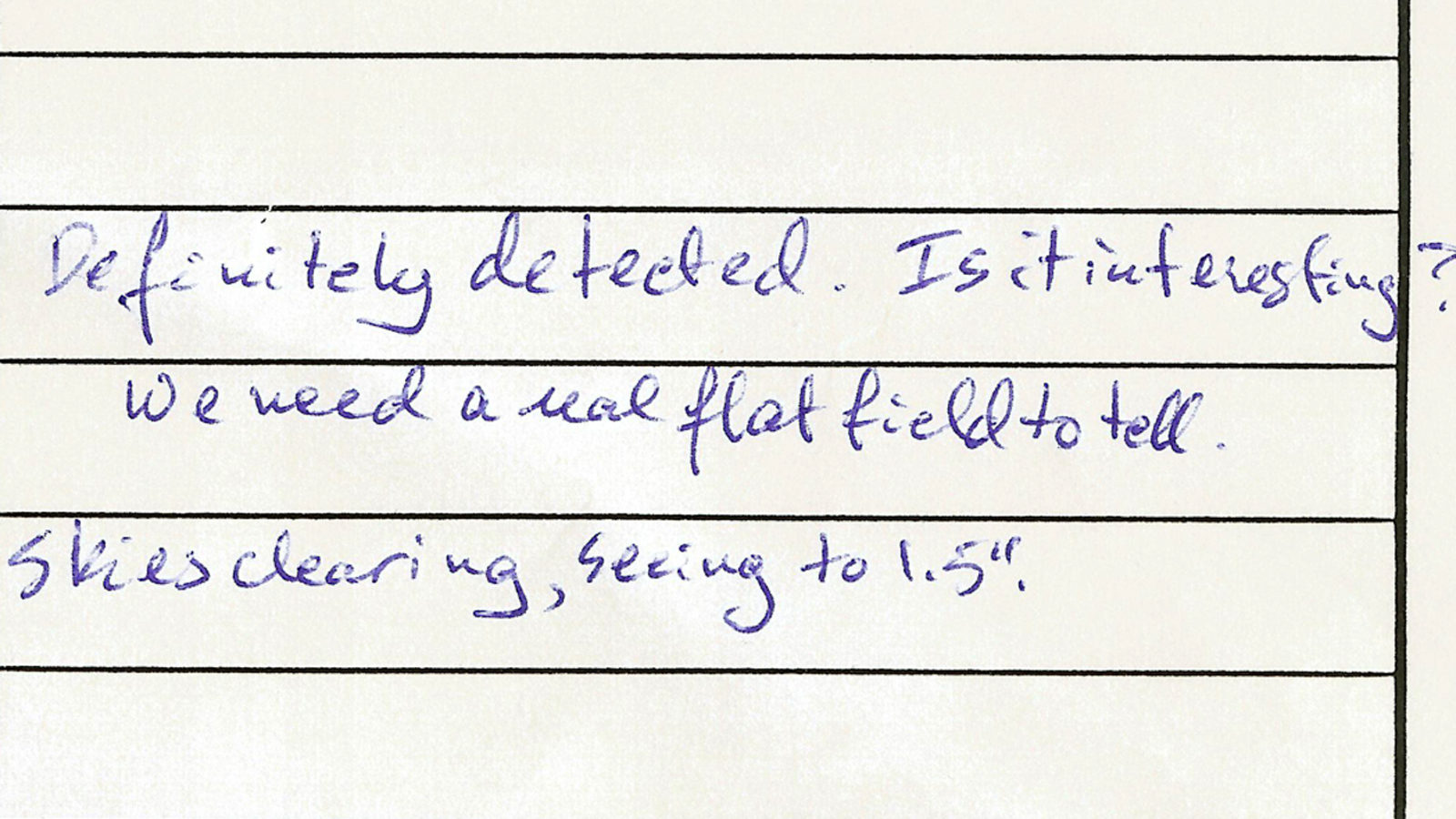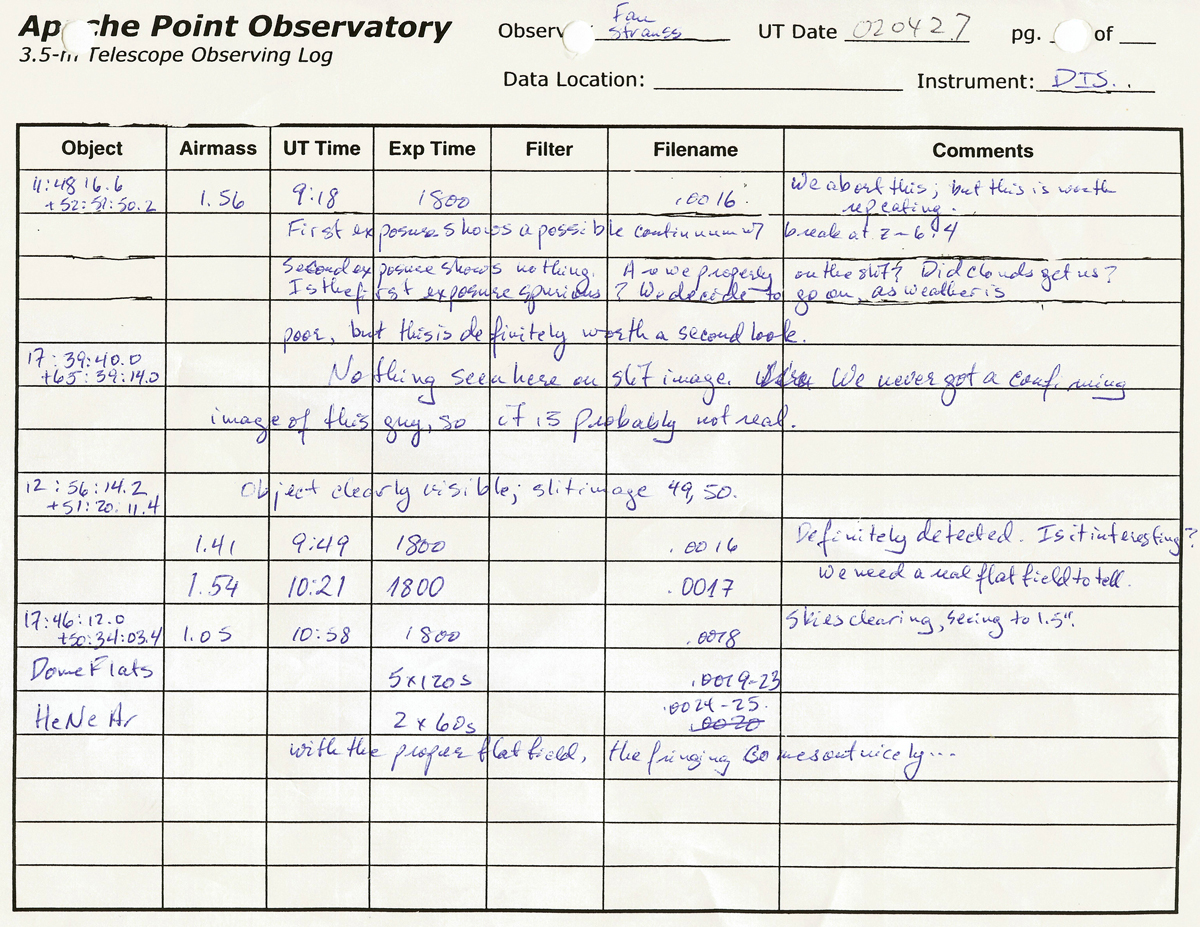The people on shift immediately identified SDSS 1148+5251 as a possible distant quasar because of its extreme colors. Light from objects rapidly moving away from an observer is shifted toward the red end of the electromagnetic spectrum. The speed of an astronomical object, reflected by its redshift, correlates with its distance from Earth, so measuring the redshift gives a distance as well.
The night was poor, and the data were not yet convincing. Nevertheless, the telescope had found a quasar at redshift 6.4 which corresponds to 6.7 x 1023 km distance. The captured light was emitted when the universe was only six percent of its present age.
The quasar shows evidence that the universe was undergoing a transition from a neutral state, having no net electric charge, to one in which most of the hydrogen was ionized, or given a net charge, by high-energy photons emitted from young stars. Understanding this “epoch of reionization” has become one of the hottest subjects in cosmology today.








